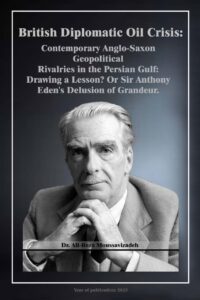The British Imperial Establishment, Post Imperial Era, and the ‘Churchillian’ World View, 1945-2016. (Adjustments & Challenges in Contemporary British Diplomatic Strategy)
109
in
society.”2 At intervals they provide the competing teams in general
elections,
as we also discussed in Chapter One, when we examined elite theory. At the same
time,
they link the electorate with their Members of Parliament and consequently
with Parliament and the
government itself. “Parties do not merely represent the
interests and opinions of their supporters.
Their role in forming and educating
public opinion is also notable.”3 This role has grown quite substantially in modern
times as means of
communication have improved sharply. Also parties
themselves have developed more efficient and
comprehensive publicity
departments and research teams. “The proper working of a party system
depends
on certain assumptions. No party majority should be permanent and there must
be a good
measure of tolerance between the parties. Each party must accept and
abide by the fundamental premises of
the constitution; and members should be
free to join or leave the party at will. These assumptions are
closely bound
together and cannot exist in isolation. “⁴
The
leader of the majority party in the House of Commons forms the
government and he/she is called the Prime
Minister. The Prime Minister is the
most powerful member of the British government. “He is the
principal adviser to
the Crown and the person who exercises most of the Crown’s
constitutional
powers. It is also his task to inspire policy and to act as the chief mediator
between
opposing groups in his party and between his party and the electorate.”5 It must
not be forgotten that if the Prime Minister wishes the government to
remain in
power he/she must always remember the need to keep colleagues and supporters
happy. The
Prime Minister, like his/her ministers, is restricted by the conventions
of ministerial and collective
responsibility.
Inside this corporate body, of all ministers being jointly responsible for
policy (or as it is
colloquially referred to, ‘the government’), is the inner council
of ministers, known as the
Cabinet. The Cabinet is the policy-making body and
prime-mover. It consists of the Prime Minister and a
group of about twenty or so
Pages: 1 2 3 4 5 6 7 8 9 10 11 12 13 14 15 16 17 18 19 20 21 22 23 24 25 26 27 28 29 30 31 32 33 34 35 36 37 38 39 40 41 42 43 44 45 46 47 48 49 50 51 52 53 54 55 56 57 58 59 60 61 62 63 64 65 66 67 68 69 70 71 72 73 74 75 76 77 78 79 80 81 82 83 84 85 86 87 88 89 90 91 92 93 94 95 96 97 98 99 100 101 102 103 104 105 106 107 108 109 110 111 112 113 114 115 116 117 118 119 120 121 122 123 124 125 126 127 128 129 130 131 132 133 134 135 136 137 138 139 140 141 142 143 144 145 146 147 148 149 150 151 152 153 154 155 156 157 158 159 160 161 162 163 164 165 166 167 168 169 170 171 172 173 174 175 176 177 178 179 180 181 182 183 184 185 186 187 188 189 190 191 192 193 194 195 196 197 198 199 200 201 202 203 204 205 206 207 208 209 210 211 212 213

